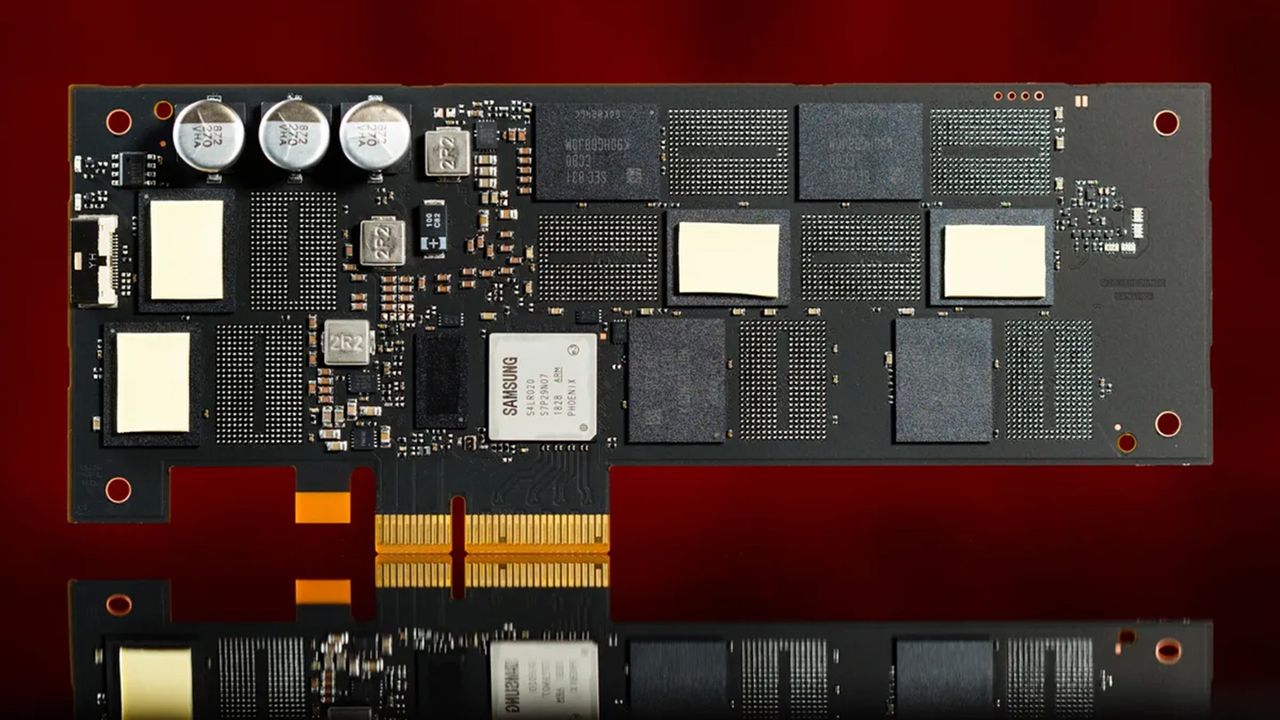
Samsung is bringing its Z-NAND memory technology back from the dead, with very high performance targets. DigiTimes reports that Samsung is targeting up to a 15x performance increase with its next-generation of Z-NAND, and creating a new technology that allows the GPU to access Z-NAND-powered storage devices directly (similar to Microsoft's DirectStorage API).
The executive VP of Samsung's memory business reportedly stated that Samsung is targeting up to a 15x performance jump with Z-NAND, while cutting power consumption by as much as 80% compared to conventional NAND flash memory.
This new version of Z-NAND is reportedly being adapted for AI applications, specifically AI GPUs, with a key focus on minimizing latency over its predecessor. Samsung is adopting a new technology dubbed GPU-Initiated Direct Storage Access (GIDS) to help with this, and it will be integrated into its next-generation Z-NAND flash. GIDS lets the GPUs access Z-NAND storage devices directly, bypassing the CPU and DRAM, significantly reducing access times and system latency.
Z-NAND first came out in the mid-to-late 2010s, as Samsung's alternative to Intel's 3D XPoint Optane memory. Both of these memory technologies introduced a new tier of solid-state storage that behaved like a traditional SSD but had far lower system latency and better performance, almost akin to DRAM.
While Intel's 3D XPoint Optane behaved entirely differently from traditional NAND flash, Samsung's first-generation Z-NAND was essentially a turbocharged version of NAND-based SLC SSDs, based on a modified V-NAND design featuring 48 layers and operating in SLC mode. One key upgrade of Samsung's first-gen Z-NAND was a reduction in page sizes, as small as 2-4 KB. This helped the SSD to read and write data in smaller chunks, making it faster and reducing system latency. Regular SSDs, by contrast, typically use page sizes in the 8 to 16 KB range.
At the time, drives powered by Intel's Optane technology and Samsung's Z-NAND competitor were roughly six to 10 times faster than traditional SSDs from that era. If Samsung's targets hold true, its next-generation Z-NAND technology will be 15x more performant than today's NVMe SSDs. Traditional SSDs are also getting faster, with PCIe 6 SSDs on the horizon, so cost is going to be an issue for future versions of Z-NAND. But so long as the AI hardware boom keeps booming, Samsung won't likely have much trouble finding customers.
Follow Tom's Hardware on Google News to get our up-to-date news, analysis, and reviews in your feeds. Make sure to click the Follow button.







